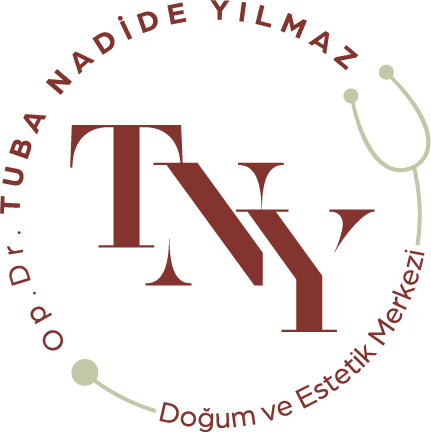Vaginal Rejuvenation surgery is a surgical procedure that offers solutions to the discomfort experienced by many women. This surgery can be an important option for women who want to eliminate aesthetic concerns and positively affect sexual life. In this article, we will take a careful look at the details of this surgery. When can you recognize its necessity, what kind of surgical process awaits you and what kind of postoperative care is required? Here are the answers to all these questions and more!
What is Vaginal Rejuvenation Surgery?
The procedure is a surgical intervention that aims to reduce the tightness and width of the vaginal tissues. This procedure is especially preferred in the postpartum period or in cases of vaginal sagging with age. At the same time, women who want to improve their vaginal aesthetics may also consider this surgery.
Who is it suitable for?
Vajina daraltma ameliyatı, aşağıdaki durumları yaşayan kadınlar için uygun olabilir:
- Postpartum Changes: Pregnancy and childbirth can cause enlargement of the vaginal tissues. This can cause women who experience discomfort during sexual intercourse to consider surgery.
- Old age: With age, the vaginal tissues can become sagging and enlarged. This can become a problem for women who experience reduced sexual satisfaction or discomfort.
- Vaginal Aesthetic Concerns: Some women are not satisfied with the aesthetic appearance of the vaginal area. Therefore, they may prefer vaginal tightening surgery for aesthetic purposes.
- Sexual Dissatisfaction: Vaginal tightening surgery can be a solution for women who cannot be satisfied during sexual intercourse due to vaginal enlargement.
However, it is important to remember that this surgery is not suitable for everyone considering it. It is always best to consult a doctor before surgery. Your doctor will help you determine the best treatment plan for you.
Vaginal Rejuvenation How is the surgery performed?
Vaginal Rejuvenation surgery is usually performed under local or general anesthesia. Here are the stages of this surgery:
- Anesthesia Before surgery, your doctor will put you under local or general anesthesia. The type of anesthesia used may vary depending on your doctor's preference and your medical history.
- Determining the Incision Area: The doctor marks the places where the vaginal wall will be narrowed and determines the area to be cut.
- Tissue removal and suturing: The cut excess tissue is removed and the vagina is narrowed. Absorbed sutures are then used to suture the vaginal tissues. These stitches are absorbed by the body and there is no need for suturing.
- Recovery Process: The postoperative healing process may vary for each patient. However, it is usually completed between 2 and 6 weeks. Your doctor will give you detailed information about your recovery process.
Benefits of Vaginal Rejuvenation Surgery
It can have positive outcomes for many women. Here are some of the benefits of this surgery:
- Increased Sexual Satisfaction: After vaginal tightening surgery, the chance of being more satisfied during sexual intercourse may increase.
- Aesthetic Improvement: Some women are not satisfied with the aesthetic appearance of the vaginal area. This surgery can help them improve the aesthetics of the vagina.
- Reduced Discomfort: Discomfort due to vaginal prolapse or enlargement may decrease.
- Increased Self-Confidence: Women who prefer this surgery for aesthetic or sexual reasons say that their self-confidence has increased.
Risks of Vaginal Rejuvenation Surgery
As with any surgical procedure, vaginal tightening surgery has risks. These risks may include the following:
- Infection There is always a risk of infection after surgery. Your doctor will take the necessary precautions to minimize the risk of postoperative infection.
- Bleeding: There is a risk of bleeding during or after surgery. Your doctor will take the necessary measures to keep this risk under control.
- Pain and swelling: Pain and swelling may occur after surgery. However, this is usually temporary and your doctor will recommend the necessary medication to manage the pain.
- Sewing Problems: Although rare, there is a risk that the stitches may open or cause problems. It is therefore important to follow your doctor's recommendations.
What Should You Pay Attention to After Surgery?
After vaginal tightening surgery, there are some important instructions you should follow. Here are the things you should pay attention to after surgery:
- Rest: It is important to rest for a while after surgery. Avoid heavy physical activity and try to rest for as long as your doctor recommends.
- Medications: Take the medicines recommended by your doctor regularly. Do not neglect medicines such as antibiotics to reduce the risk of pain or infection.
- Sexual intercourse: Avoid sexual intercourse for as long as your doctor recommends. Starting sexual activity before recovery is complete may cause complications.
- Check-up with the doctor: You may need to go to the doctor for a certain period of time after the surgery. Do not disrupt these checks and do not hesitate to ask your doctor any questions you may have.
Vaginal Rejuvenation Surgery: Here are the Details
In this article, we have taken a detailed look at the details of vaginal tightening surgery. But if you still have questions, here are some frequently asked questions and answers:
Frequently Asked Questions (FAQ)
1. Does vaginal tightening surgery hurt?
- Since general or local anesthesia is applied during the surgery, pain sensation is minimal. After surgery, medications are used for pain management.
2. How long does vaginal tightening surgery take?
- The duration of the surgery may vary depending on the patient's condition and the complexity of the surgery. It usually takes 1-2 hours.
3. When can I return to normal activities after surgery?
- The healing process can vary from person to person, but a return to normal activities is usually possible between 2 and 6 weeks.
4. Does the vagina have a natural appearance after vaginal tightening surgery?
- Yes, the vagina has a natural appearance after surgery. Doctors perform the surgery taking into account aesthetic concerns.
5. When can I start sexual intercourse after surgery?
- You should follow the time recommended by your doctor. It is usually safe to start sexual intercourse after 4 to 6 weeks.
Conclusion
Vaginal tightening surgery is an important surgical option that improves sex life and self-confidence for many women. However, if you are considering this surgery, it is important to consult a doctor carefully and understand the entire procedure and the risks. A careful recovery after surgery will help you achieve successful results. For more information about vaginal tightening surgery or if you are considering this procedure, contact us immediately for more detailed information.
Vaginal tightening surgery is a procedure that has the potential to improve women's sex life and self-confidence. However, it is important to remember that such surgical procedures have risks and should be carefully evaluated. As with any medical procedure, vaginal tightening surgery should be performed by a specialist and all procedures and risks should be clearly explained.
Vaginal tightening surgery can provide many benefits, including increased sexual satisfaction, aesthetic improvement and reduced discomfort. However, if you are considering this surgery, you should discuss all the details with your doctor and determine whether the procedure is right for you. Remember that every body is different and it is important to find the treatment plan that best suits your individual needs. For more information about this procedure, contact us today for more detailed information.
In this article, we have carefully looked at the details of vaginal tightening surgery and answered frequently asked questions. We hope this information has helped you develop a greater understanding of vaginal tightening surgery.









